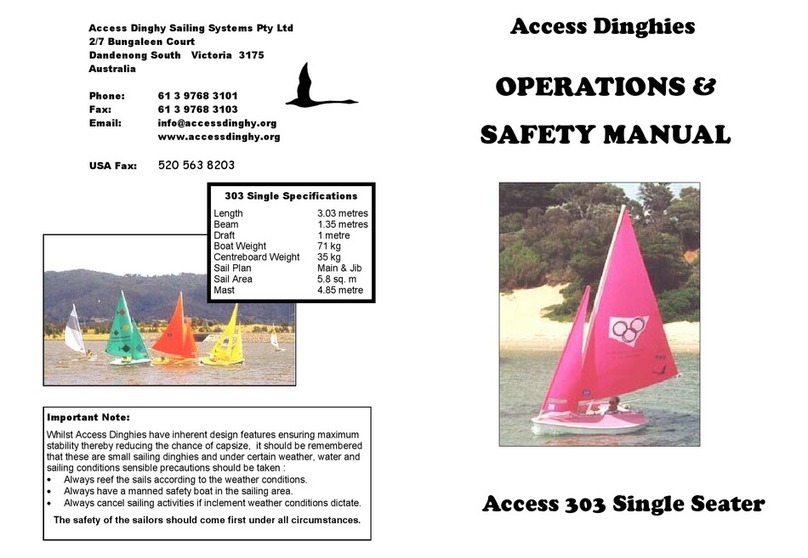3
Introduction
This manual has been compiled to help you to operate your craft with safety and pleasure. It contains details
of the craft, the equipment supplied or fitted, its systems, and information on its operation and maintenance.
Please read it carefully, and familiarise yourself with the craft before using it.
If this is your first craft, or you are changing to a type of craft you are not familiar with, for your own comfort
and safety, please ensure that you obtain handling and operating experience before assuming command of the
craft. Your dealer or national sailing federation or yacht club will be pleased to advise you of local sailing
schools or competent instructors.
Please keep this manual in a safe place, and hand it over to the new
owner when you sell the craft.
Personal Floatation Devices (PFD’s)
There are many types and variety of buoyancy aids available, manufactured to different sets of standards. The
PFD is a personal item of safety equipment, designed specifically to assist in preserving a person’s life when in
the water. Some PFD’s provides buoyancy to help you float with your head above the water.
All sailors and volunteers should wear a PFD at all times whilst on, or near water.
PFD’s are subject to normal wear and tear. Each one should be checked regularly and if in doubt about its ser-
viceability it should be replaced. If they become wet from salt water they should be hosed down with fresh
water and allowed to dry.
PFD’s and Children
A properly designed PFD of the correct size will keep a child’s mouth and nose clear of the water. A child
should be taught how to put on a device and should be allowed to try it out in the water. It is important that
the child feels comfortable and knows what the PFD is for and how it functions.
Safety Precautions
If sailed with care, this boat is unlikely to capsize in normal use, provided that the sail area is adjusted to suit
the prevailing conditions and the main sheet is not belayed. Whilst Access Dinghies have inherent design fea-
tures ensuring maximum stability thereby reducing the chance of capsize, it should be remembered that these
are small sailing dinghies and under certain weather, water and sailing conditions sensible precautions should
be taken :
•Always reef the sails according to the weather conditions.
•Always have a manned safety boat in the sailing area.
•Always cancel sailing activities if inclement weather conditions dictate.
•Always lock centreboard in position with long centreboard locking pin provided.
Capsize and Man Overboard
Re-boarding after man overboard. In the event of man overboard, use keel handle as a handhold. Board over
the aft port or starboard sides.
Towing
The strong point for towing is the main mast. Pass the tow line through the guide ring at the bow and attach to
the mast with a bowline.
The safety of the sailors should come first under all circumstances.




























